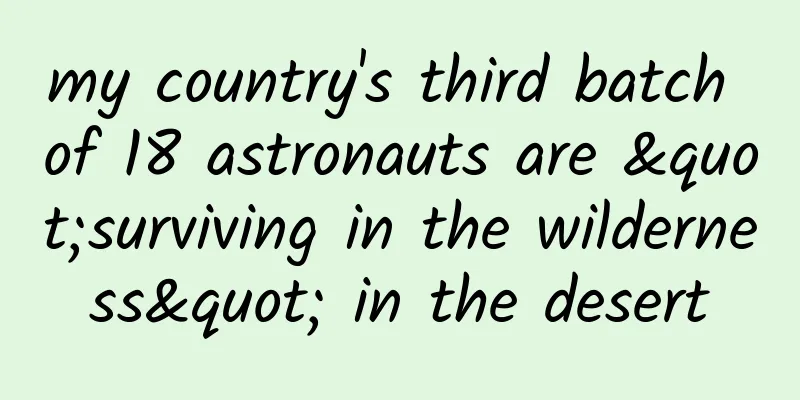How did humans learn to count?

|
Author: The Nutcracker Studio To this day, we still cannot verify when humans first began to use the ability to count. Because of this, it is difficult for us to know why humans truly mastered the ability to count. Perhaps we can understand it this way: numbers are not invented by humans, but like atoms and gravity, they already exist in nature. We did not create them, we just use them. The reason for this idea is that not only humans have the ability to count, but many animals also have similar abilities. Let's start with primates. A 2010 study found that trained macaques could combine different dots on a screen to add and come up with the correct sum. The monkeys were able to calculate with 76% accuracy, far higher than the accuracy of guessing. In addition, chimpanzees were also able to recognize and use mathematical symbols after training - an ability previously thought to be unique to humans. If animals acquire the ability to count through training or with human interference, then the ability to count that some animals are born with is truly amazing. For example, bees can count four patterns containing different elements, which helps them remember the source of food and survive in a complex environment. It is no wonder that the 19th-century German mathematician Leopold Krone said: God created the integers, and the rest is done by humans. Although we cannot now determine when humans began to master the ability to count, there are still some archaeological discoveries that help us understand ancient humans' understanding of "counting." One of the typical cases is the "Ishango Skeletons". In 1960, Belgian geologists discovered some bones with lines carved on them in what is now the Democratic Republic of Congo. These bones came from baboons, and the numerous marks on them were initially thought to be simple records used by people at the time, but mathematicians believe that these 22,000-year-old bones have rich mathematical significance and are far from being used simply to record events. Take the notches on one of the bones as an example. The notches changed from three to six, from four to eight, and from ten to five, which probably shows that people at that time not only had the concept of counting, but also the idea of doubling and halving. In other words, if someone could travel back to that era with a deck of playing cards, they could also play Landlord with the people of that time, because the humans at that time could also shout to double the Landlord card! What is even more surprising is that in addition to the concepts of doubling and halving, people at that time may have had some understanding of odd and even numbers and prime numbers. For example, on a certain bone, the marks are odd numbers such as 9, 11, 13, and 17. On some bones, all the prime numbers between 10 and 20 are included. In addition to the Ishango bones, earlier counting sticks have been found in archaeological research, such as the Lebombo bones found in South America. It is nearly 40,000 years old and has 29 notches on the bone. Although scholars have not yet been able to truly figure out what this type of bone is used for, some speculate that it is a tool for recording the lunar calendar. This article is produced by Science Popularization China-Starry Sky Project (Creation and Cultivation). Please indicate the source when reprinting. |
Recommend
Sunscreen may damage corals. How can you protect yourself from the sun when you go to the beach?
In 2018, the Republic of Palau restricted the sal...
The latest ranking of 50 information flow advertising media platforms
The following is the latest traffic rankings of t...
Is it better to use CDN or high-defense server configuration for server defense?
Is it better to use CDN or high-defense server co...
What does a doctor mean by "light diet"? I bet few people know
Let's do a multiple-choice question first. Wh...
Android thread communication handler
This article discusses the Android handler mechan...
Gastric acid is so strong, why does drinking dirty water cause diarrhea? | Ronggelao Ke
As the leader of biological evolution, many organ...
Shared bicycles are so popular that power banks are also joining in the fun. Why are Tencent and Xiaomi investing hundreds of millions but being ridiculed by Wang Sicong?
With the emergence of shared bicycles, the "...
How to use Toutiao's recommendation rules to create a hit article with over 1 million readers?
Toutiao has been able to become a disruptor in th...
A guide to filling out the application form for the 2020 College Entrance Examination. How to fill out the application form for the 2020 College Entrance Examination?
As the old saying goes, "30% of the test and...
Facebook does this about web caching
Eight years ago, the Yahoo team did a detailed st...
How to apply for a Baidu promotion account and register a Baidu promotion demo account?
Baidu promotion does not have a simulated account...
Typography in Material Design
Roboto Roboto has been the default font for Andro...
CG technology brings Paul Walker back to life in Fast and Furious 7
Along with the collision of a red Ferrari and a g...
How do I summarize and organize materials as a new media operator?
A long time ago, I asked a senior, what is operat...
In addition to PV and UV, product operations also need to pay attention to these indicators!
In the past six or seven years, I have been starti...









